Switch to the mobile version of this page.
Vermont's Independent Voice
- News
- Arts+Culture
- Home+Design
- Food
- Cannabis
- Music
- On Screen
- Events
- Jobs
- Obituaries
- Classifieds
- Personals
Browse News
Departments
Browse Arts + Culture
View All
local resources
Browse Food + Drink
View All
Browse Cannabis
View All
-
Business

Cannabis Company Could Lose License for Using…
-
Culture

'Cannasations' Podcaster Kris Brown Aims to 'Humanize'…
-
True 802

A Burlington Cannabis Shop Plans to Host…
-
Business

Judge Tosses Burlington Cannabiz Owner's Lawsuit
-
Health + Fitness

Vermont's Cannabis Nurse Hotline Answers Health Questions…
Browse Music
Browse On Screen
Browse Events
View All
Quick Links
Browse Classifieds
Browse Personals
-

If you're looking for "I Spys," dating or LTRs, this is your scene.
View Profiles
Special Reports
Pubs+More
Melinda Moulton Has Blended Business Savvy and a Hippie Ethos to Transform Burlington
Published August 31, 2022 at 10:00 a.m. | Updated September 27, 2022 at 6:23 p.m.
Melinda Moulton looked as giddy as a schoolgirl while strolling past the shiny silver Amtrak train. It was about to depart Burlington's Union Station on its July 29 inaugural run to New York City. Hearing a funk band entertaining the crowd of several hundred who'd gathered for the event, Moulton grabbed the hand of her husband, Rick Moulton, and did a little celebratory jig.
Moulton had good reason to kick up her heels. She was about to board the first daily passenger train running between Burlington and New York since 1953 — a cause Moulton had championed for nearly four decades.
Spotting U.S. Sen. Bernie Sanders (I-Vt.) engrossed in conversation, she exclaimed, "I need a piece of this guy!" Sanders was mayor of Burlington when Moulton started revitalizing the station. Moulton tapped him on the shoulder, and he spun around with a grumpy scowl — until he saw who was interrupting him. Sanders flashed a rare smile and gave Moulton a big hug.
Moulton wasn't among the dignitaries invited to give speeches and cut the ceremonial ribbon that morning. Frankly, she should have been. All of the politicos who schmoozed on the train platform stood beneath a green awning that bore the name Main Street Landing — the company Moulton cofounded in 1988 with her longtime business partner, Lisa Steele. The two women renovated Union Station in the 1990s with this day in mind.
"I'm very, very pleased that in my lifetime I saw rail service come back to Burlington," Moulton said, as she and Rick settled into their seats aboard the Ethan Allen Express with this reporter in tow. "It's been a long slog."
And, ultimately, a successful one. Those who know Moulton, a hard-nosed businesswoman, say once she sets her mind to something, she is as unstoppable as a locomotive. For 40 years, she's been a driving force in shaping Burlington's built environment.
As Main Street Landing's chief executive officer — a positioned she relinquished in April — Moulton helped transform the waterfront from an industrial wasteland into an international tourist attraction and the crown jewel of the Queen City. The self-described "'60s hippie" did it while maintaining her long-held values around environmental sustainability, community involvement and social justice — essentially redefining how development happens.
Now retired, the 72-year-old grandmother, an erstwhile cliff diver and trainer of horses, is testing the brakes but not slowing down. The causes that have animated her life — and still do — keep her going.
Over the years, Moulton's influence has extended well beyond the waterfront. The nearly two dozen nonprofit boards on which she's served attest to her wide-ranging interests and passions. They include Audubon Vermont, the American Civil Liberties Union of Vermont, the Burlington Business Association, the Intervale Center, Lund, the Vermont Commission on Women, the Vermont Folklife Center, the Williston Community Justice Center — and, notably, Planned Parenthood of Northern New England.
Moulton gets fired up about many issues, from the climate crisis to existential threats to American democracy. But no issue cuts deeper than women's reproductive rights, a cause she took up after the untimely death of her mother, at age 40, from a botched hysterectomy. In recent years, Moulton has been sharing her mother's story to illustrate the stakes if women lose this fundamental human right.
And that was before the U.S. Supreme Court overturned Roe v. Wade in June. For Moulton, whose life was irrevocably altered by men exerting control over women's bodies, it was a devastating blow.
As she lamented, "I got my train, and I lost my reproductive rights."
Built With Moulton Steele
Moulton remembers when the Burlington waterfront was barricaded behind a barbed-wire fence and littered with vacant warehouses, derelict fuel tanks and a rat-infested granary. As she put it, "It wasn't a place you'd want to be or send your children."
In 1983, an investment company, Alden Waterfront, proposed a $100 million plan to redevelop it with condominiums, stores, a large parking garage, an art museum, a lakefront promenade and a seven-story hotel. Alden contracted Cambridge, Mass.-based architect Benjamin Thompson, who was famous for urban waterfront renewal projects such as New York City's South Street Seaport and Boston's Faneuil Hall Marketplace. Moulton was hired as Alden's director of operations.
Among Alden's investors was Steele, who moved to Vermont in the 1960s and owned prime real estate on the waterfront, including the old Union Station, which had been occupied since the 1950s by Green Mountain Power. Steele is a member of the affluent Bancroft family, which owns the controlling interest in Dow Jones and was the parent company of the Wall Street Journal until it sold the newspaper to Rupert Murdoch in 2007.
The Alden Plan passed muster with city regulators, but in a December 1985 election, Burlington voters rejected a proposed $7 million bond to pay for it.
Steele was actually relieved that it failed. The plan was enormously expensive, she explained in a recent interview, and it involved too many businessmen, including her second ex-husband, who didn't share her values.
With the project dead in the water, Moulton resigned and took a job as director of marketing at Lake Champlain Chocolates. Alone one day in Alden's Union Station office, Steele called Moulton and asked if she would return to help tie up some loose ends on the project.
"All of a sudden Melinda said, 'You know what? I think we could do something really good together here,'" Steele recalled. "That's where it all started, and I'm really grateful it did."
The Alden Plan wasn't the first attempt to redevelop the waterfront; 21 previous efforts had failed. But Moulton said she was always confident that she and Steele would pull it off.
"Because I had worked for the men who couldn't do it," she said. "There were too many lawyers, accountants and men in suits."
Moulton and Steele rethought their entire approach to development. They spent six months brainstorming, Moulton said, then devised a business plan that emphasized their hippie values. They envisioned a waterfront that was open and accessible to everyone, not just the wealthy. Their buildings would be eco-friendly and built with local materials, and they would offer services that people wanted: parks, sidewalks, theaters and community gathering places.
They renamed the company Main Street Landing and chose a logo that reflected their worldview: a house that radiates sunshine. "Because that's what we're all about," Moulton said. "Love and sunshine and happiness and kindness and caring."
Though Steele owned all the properties and Moulton was technically her employee, both women say their business arrangement was always a partnership of equals. Steele served as the behind-the-scenes financier. Moulton became Main Street Landing's public face, writing letters, testifying at hearings and giving press interviews — or, as she called herself, "Little Miss Talkie-Talkie."
A natural storyteller, Moulton excelled in that role, in large part because of her ability to connect with people. With playful, self-effacing humor, she reveals herself in a way that is both charming and disarming. As she put it, "I'm an open book."
Bruce Seifer, who worked in Burlington's Community & Economic Development Office, noticed that Main Street Landing was doing things differently. For starters, Moulton and Steele sought input from city residents and business owners and hired local talent. They assembled a team of experts, including Waitsfield-based architect Bill Maclay, to create a plan that emphasized small, incremental growth. The buildings would be energy efficient and publicly accessible, and they'd complement the waterfront rather than tower over it. Those professionals also had to have a sense of humor, be committed to consensus building and be comfortable working with women.
"Those were the kind of things that they, on their own, came up with," Seifer added. "They supported what we were trying to do as a city — to promote socially responsible approaches to running a business."
Main Street Landing planned its construction in phases, beginning in the mid-1990s: Phase one was the renovation of Union Station, as well as construction of the Wing Building, at 1 Steele Street, and the CornerStone Building, at 3 Main Street. Phase two: the Lake & College Building.
Once completed, the four buildings, valued at $30 million, would house 250,000 square feet of commercial and residential space, including theaters, art galleries, restaurants, a gym and community gathering rooms. As Seifer noted, 46 percent of it was public space.
When Main Street Landing unveiled its 25-year master plan to the planning department and city council, Moulton and Steele received a standing ovation.
How did they manage to succeed where so many others had not? "The principles and values that they believed in were baked into their project," Seifer said. "And they had the fortitude to stick with them and not bend."
Potlucks and Live Music
Main Street Landing had something else that other developers and landlords did not: a deep-pocketed investor — Steele — who didn't need to turn a profit immediately. As Moulton pointed out, more than a decade had elapsed between when Steele purchased her properties and when they broke ground on new construction.
Once they were landlords, Moulton ran the day-to-day operations. In an effort to attract people to the waterfront, she leased commercial space in Union Station at affordable rates. Her business card read, "Not your typical developer."
Burlington artist Katharine Montstream remembers meeting Moulton for the first time in the building, which became a mecca for musicians, artists, nonprofits and small businesses. They included the band Mango Jam, Lake Champlain Land Trust and Vermont Tent Company. Downstairs, the Committee on Temporary Shelter ran a day station for the homeless.
To meet her prospective landlady, Montstream arrived toting an infant. She asked Moulton if it was OK to bring kids and dogs to work. "Absolutely!" Moulton said. They struck a deal for a $100-a-month studio. Soon, kids' toys and baby bottles littered the floors, and dogs chased tennis balls up and down the halls.
In those days, Union Station was a drab, 1950s-era office building. Montstream remembers how Moulton encouraged her tenants to make it livelier and more colorful. She organized potlucks and live music on Friday and Saturday nights.
"She definitely made really solid efforts to bring the tenants together and make it a community, because she was really proud of the people she brought in," Montstream added. "She was a perfect combination of 'all business' and completely supportive of everyone there. She always had your back."
David Zuckerman, Vermont's former lieutenant governor and a Hinesburg farmer, had a similar experience. In the early 2000s, Zuckerman needed a distribution site in downtown Burlington for his community farm shares. So he asked Moulton if he could set up outside Union Station for half the year. Moulton immediately agreed and never charged him rent.
"She was always trying to make the waterfront more welcoming and lively and more community-centered," Zuckerman added.
Not everyone felt the love. In the late 1990s, Moulton and Steele began the extensive permitting process on the Lake & College Building but were stymied by repeated appeals as they tried to secure an Act 250 permit.
"Lisa and I were women in a man's world and a man's profession," Moulton said. "We weren't very popular."
Among their opponents was Burlington's Green Party. It objected to a proposed 200-space parking garage, arguing that it would create excessive traffic on the waterfront. Rather than fight the Greens on that point, Moulton embraced their proposal and cut the number of spaces in half.
"What the Greens wanted us to do, we did, and it made the project better," she said. "Sometimes with that intensity, you end up coming together and creating that sense of love when you can meet people halfway. That's what Lisa and I have always tried to do on the waterfront — meet people halfway."
Construction on the Lake & College Building finally began in 2003, three years after the permitting process began. When the city asked Moulton to pick a street address, she didn't hesitate. "I'm a '60s girl," she said, "so I asked for 60 Lake Street and got it."
Finding tenants was another matter. In February 2005, four months before the building's scheduled opening in July, Moulton didn't have a single lease and was getting nervous. Out of the blue, she got a phone call from Jeffrey Hollender, cofounder of Seventh Generation, a maker of eco-friendly household and personal care products. She and Hollender were friends and had served together on the board of the Vermont Public Interest Research Group. Seventh Generation had five locations and was looking to consolidate under one roof, Hollender told her.
Moulton walked him and his team through the still-unfinished building on a subzero day. As she recalled, they climbed the concrete stairs to the third floor, which didn't even have windows yet. The floors were coated with ice.
"He pulls back the plastic, looks out over the breakwater and goes, 'Oh, my God! This is where we need to be!'" Moulton recalled. A week later, Seventh Generation signed a long-term lease for 36,000 square feet, and Moulton had her anchor tenant. Others, such as the Skinny Pancake, Merrill Lynch, and the Peace & Justice Center, followed.
In the years since, Main Street Landing's occupancy rate in all of its buildings has hovered between 95 and 99 percent. Even during the pandemic, Moulton didn't lose any tenants.
"She was especially generous during COVID," noted Rachel Siegel, former executive director of the Peace & Justice Center, "cutting rent to just cover taxes and insurance for all local businesses in her properties."
Over time, Moulton filled her buildings with hundreds of works by local artists that became part of Main Street Landing's permanent collection. She also commissioned original pieces, such as "Train Ball," a spherical sculpture by Norwich native Lars Fisk.
Fellow developer Ernie Pomerleau, president and CEO of Pomerleau Real Estate, commended Moulton and Steele on what they accomplished on the waterfront. He called their work "a wonderful marriage of economics and philanthropy and meeting community needs.
"They spent more per square foot than the rest of us would have," Pomerleau added with a laugh, "but that's one of the blessings of their design. I'm delighted that they spent as much time as they did enhancing and improving Burlington."
A Builder's Daughter
Moulton cultivated her work ethic and business savvy from an early age. Born Melinda Stoudt on May 2, 1950, she grew up in Allentown, Pa. Her father, Robert Stoudt, owned H.E. Stoudt & Sons, one of the largest construction firms in eastern Pennsylvania. She was the third of four children he had with Moulton's mother, Arra Betty Yaeger Stoudt. Moulton also has two half sisters, two stepsiblings on her father's side and — as she learned years later — another half sister on her mother's side.
As a child, Moulton spent much of her free time following her father to construction sites, work trailers and ribbon-cutting ceremonies for the shopping centers, churches and department stores he built. Because he worked six-day weeks, she often joined him at the office on Saturdays, playing with his adding machines and drafting tools.
Moulton's father also raised American saddlebred horses. As a teen, she traveled with him to Kentucky and Tennessee and managed his breeding books. In the winter before school, she fed his 86 horses and mucked out their stalls; in the summer, she painted horse fences and broke in the broodmares after their foals were weaned.

- Courtesy
One summer, when Moulton was 8, her mother drove her and her brother to Mexico in a convertible. In the 1950s, it was considered unusual and possibly suspicious for a married woman to travel without a husband.
"She hit a horse going into Mexico City and was arrested, so we had to deal with that," Moulton remembered. "Then we lost the brakes on one of the mountain passes. That was scary. But it was an incredible trip."
The fun ended abruptly when they arrived in Acapulco.
"Who flies in but my dad," Moulton said. Her mother informed the kids that their parents had come to Mexico for a divorce. Moulton remembers sitting in a restaurant when her father arrived. As her parents talked, she watched men outside diving off the cliffs into the sea.
"I looked at those men and decided, I'm going to become a cliff diver," Moulton said. "That's how I'm going to get through all this, because that looks like a lot more fun than what's happening here."
Moulton, her siblings and their mother still lived in the family's Allentown house when, as she put it, "that whole abortion thing happened." Years later she pieced together the story from her mother's now-deceased sister, Isabel Bauder, whom Moulton called "Aunt Isy."
After the divorce, Arra Betty fell in love with another man. He spent a lot of time at their house — until he got Arra Betty pregnant and then disappeared. Unwed with four children and two prior miscarriages, Arra Betty induced an abortion. Moulton was there when her mother was taken away by ambulance, though at the time, she didn't know why.
Back then, a woman needed her husband's permission to obtain contraception. So, when Arra Betty got pregnant again — abortion was still illegal — she kept it secret. Moulton remembers her mother leaving for the hospital to get "a procedure." In fact, she gave birth and put the baby up for adoption. Moulton was in her twenties when she discovered she had a half sister.
After that pregnancy, Arra Betty, on the advice of a doctor, had a hysterectomy to ensure that she never got pregnant again. She contracted peritonitis from the surgery and died of pneumonia three days before Christmas. Twelve-year-old Moulton, who was prepubescent, couldn't comprehend what had happened.
"All I knew," she said, "was that we were motherless."
Moulton and her siblings went to live with a nanny for a year while their father completed an addition for them on his home. When she was older, the loss propelled her to examine the male-chauvinistic society in which she was being raised, and it kindled her political activism, still blazing today.
"My mother was really a victim of male dominance," she said. "I'd seen what happens to women, and I just didn't want that kind of life for myself or the women in my life ... We deserve so much more."
From 'Gibbs Girl' to Burning Bras
click to enlarge 

- Courtesy Of Ppnne
- Melinda Moulton speaking at the Planned Parenthood fundraiser in 2015
The first time Moulton shared her mother's story before an audience was on December 1, 2015, at a 50th anniversary party and fundraiser for Planned Parenthood of Northern New England. Highlighting the event, at Higher Ground in South Burlington, was a Moth Radio Hour-like story slam, in which half a dozen people got up onstage and shared how reproductive rights had touched their lives personally.
Even Moulton's close friends and family members — who knew her story — were moved to tears.
"That was really, really, really hard," Moulton remembered.
Four years later, Planned Parenthood invited Moulton to share her story with the Vermont legislature in support of the Freedom of Choice Act of 2019. Moulton had served on the organization's board for nine years and had overseen two of its capital campaigns to upgrade its Vermont clinics; she still serves on PPNNE's Vermont Action Fund, the group's legislative policy arm.
Moulton agreed. After walking past chanting anti-choice protesters on the Statehouse steps, she stood up before a room of 300 people and recounted the most painful memory of her childhood. When it was over, the tough-as-nails businesswoman felt so drained that she had to be helped back to her seat.
In January, Moulton testified again to state lawmakers in support of the Reproductive Liberty Amendment to the Vermont Constitution, which Vermonters will vote on in November. Then, after Roe was overturned, U.S. Rep. Peter Welch (D-Vt.) asked Moulton to retell her story at a press conference. A Boston TV station interviewed her, then the Washington Post.
Lucy Leriche, PPNNE's vice president of Vermont public policy, called Moulton "a force of nature ... and someone who will not back down.
"Melinda is a great storyteller and doesn't leave out any of the painful stuff," Leriche said about the challenge of swaying ambivalent lawmakers. "Regardless of how they feel about abortion or reproductive rights, it's very hard to dismiss her story in person."
But Moulton usually omits one part of the narrative: the impact this tragedy had on her health. After her mother died, Moulton became a lifelong anorexic, as she described it; for years she was told that she could never bear children.
After high school, Moulton wanted to attend a four-year college, then medical school. Her father nixed that idea. He informed Moulton that she would attend Katharine Gibbs College, a now-defunct women's secretarial school in New York City. His reasoning: If her future husband were to die, she would be able to support herself.
Moulton credits Katharine Gibbs with skills and insights that helped her in business. The school promoted a version of female empowerment, but it also typified "Mad Men"-era attitudes about women's role in the workplace. As a so-called "Gibbs girl," Moulton had to wear white gloves, a hat and high heels to class. She lived at the Barbizon Hotel, an all-female residential building at 63rd Street and Lexington Avenue in Manhattan. Each morning, she and her classmates walked down Park Avenue to what was then the Pan Am Building to learn shorthand, typing and punctuation.
One night in 1968, she and a friend left class and found the streets empty and police everywhere. One cautioned them to hurry home; the Rev. Martin Luther King Jr. had just been assassinated, and riots were raging uptown. Moulton could see the orange glow of fires burning in Harlem.
Moulton had already begun to notice the price some paid for speaking out against injustice. One of her professors showed up for class on crutches after a rally at Columbia University; he had been beaten by police. The murder of King, who preached nonviolence, took Moulton's outrage to a new level.
"I was just 17 years old, but I knew my life would never be the same," she said. "That was the moment I realized I wanted to be an activist."
When Moulton turned 18 the following year, she transferred to Gibbs' Boston campus without telling her father. "He was pretty pissed off," she said, though she was now old enough to make such a decision without his permission.
After finishing her two-year associate's degree, Moulton got a job at Harvard University running the office of Mark Ptashne, a microbiologist who worked in the laboratory of Dr. James Watson, codiscoverer of DNA. Ptashne was good friends with Daniel Ellsberg, the former U.S. military analyst who in 1971 released the Pentagon Papers to the New York Times and the Washington Post.
Meeting Ptashne, Moulton said, inspired her to get involved with the anti-Vietnam War movement. Soon, she was regularly attending street demonstrations against the war and marching in support of women's rights.
Despite her growing activism and exposure to the Boston counterculture, Moulton was still, in her words, "kind of straight." At 19, she had an important job and was making good money. She also wanted to prove to her father that she could stand on her own two feet and didn't need a husband to take care of her.
"And then, in walks this hippie, this long-haired, beautiful man," Moulton said, as she wrapped an arm around Rick's waist and nuzzled her nose into his cheek.
"It was time to drop out, man!" Rick said with a grin.
Huntington Retreat
Much has changed in the 52 years since Melinda and Rick began their love affair. Rick's hair is shorter and thinner now, and Melinda's is nearly white. What hasn't changed are their frequent displays of affection. They're still as physical as two lovestruck hippies tripping in a Green Mountain meadow.
The sun always shines on the Moultons' 30-acre property in Huntington: A smiling solar orb is painted on the outside of the cabin they built together in 1974 from rocks they pulled from local fields and the Huntington River.
"I hauled 36 truckloads of stone from Starksboro with a 2-year-old on my back," Melinda said, as she welcomed a guest to the couple's home, which sits at the top of a long, steep dirt road.
Inside, the rustic cabin is a collage of the couple's life together. It's decorated with family photos, children's and grandchildren's drawings, posters, and political bumper stickers and has a pool table in the center of the living room. In one corner is Melinda's upright Steinway — she composes classical music — a birthday present from Steele. In another corner lives a Spanish Timbrado canary named Mr. Sunshine who sings joyously.
A denuded tree trunk runs vertically through the center of the house, as does the stone chimney that Rick built. A smooth tree branch serves as a handrail on the stairs to the second-floor bedrooms.
Melinda and Rick met in December 1970, while he was working on a filmmaking degree at Harvard. He was 21; she was 20.
"He was very grabby," Melinda remembered.
"I got her to sit on my lap," he replied, as he prepared lunch for the three of us.
After leaving Harvard, Rick traveled to Europe, then showed up at Melinda's house in Cambridge, Mass., the following spring. He took her to see the 1966 film King of Hearts. Afterward, Melinda told Rick that he could sleep on her sofa.
"The next morning, I woke up and he was doing yoga naked on my floor," she recalled. "And I said, 'You! Get over here! You're my guy!' And that was it."
The couple moved in together in June 1971. That fall, they were in Colorado when Rick finished his degree at the University of Denver. By October, Melinda was pregnant with their first child, Eli. When he was born, Rick was there in the delivery room, a rare occurrence in those days.

- Courtesy
- Melinda and Rick Moulton with their son, Eli, in 1974
The couple moved back east and settled in Huntington, not far from Rick's parents in Shelburne. In the early '70s, land was cheap, water was plentiful, and they could smoke weed and eat psychedelic mushrooms without worrying much about getting busted.
"It was also close to the border if we needed to get out of the United States," Melinda noted. "Richard Nixon scared the shit out of us. We were a scared generation."
"And we didn't want our son registered for the draft," Rick added.
In 1974, using a low-interest mortgage from the Federal Housing Administration, the couple purchased a 10-acre hayfield for $16,000, for which they paid $86 per month. They invited friends to pitch tents in their meadow and began building the 1,200-square-foot cabin, which they've since expanded.
As cold weather set in, most of their friends disappeared. Melinda took a job as director of operations at the University Health Center. Each morning she hiked down the hill, drove into Burlington, then returned to their tent at night and cooked dinner over an open campfire.
"It was early November when the first real snow fell," she said. "We woke up to about six inches of snow."
There was still no roof on the cabin when Eli contracted an ear infection. Melinda, who had had enough, moved in with a girlfriend in Malletts Bay. Three days later, Rick joined them. By Easter, the roof was finished, and the Moultons — who legally married in 1987 — have lived there ever since.
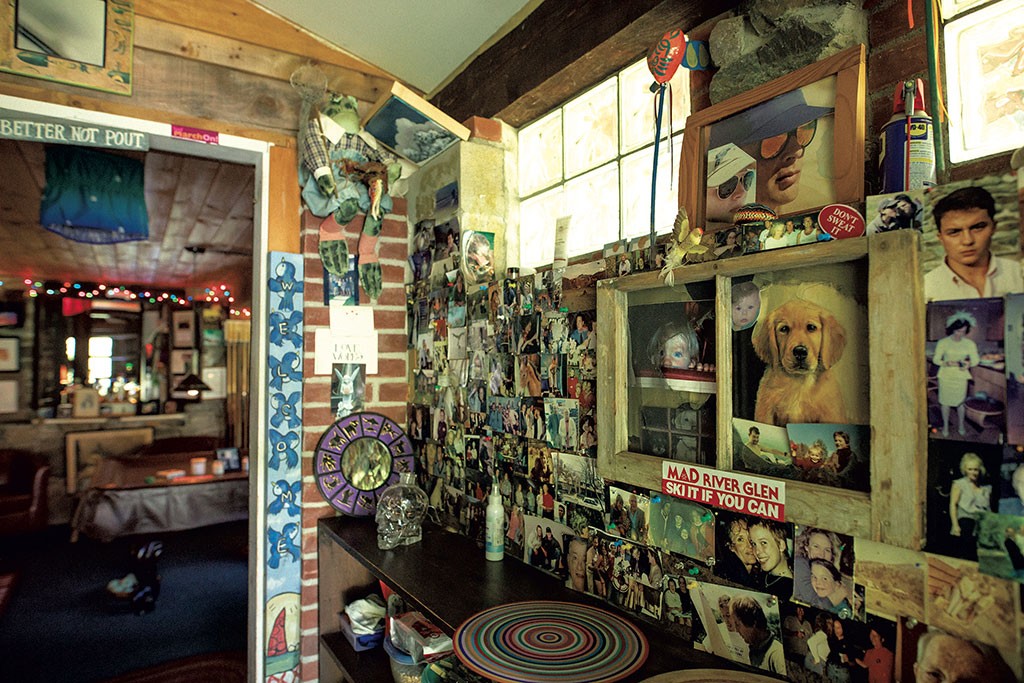
- Luke Awtry
- Melinda and Rick Moulton's home
Their second child, Mariah, was born at home and now lives next door with her own family. The bedroom she shared with Eli still looks the same as it did when they were kids, with its bunk bed and doodles on the wall.
For five years, the Moultons were stay-at-home parents who worked together on Rick's historical documentary, Legends of American Skiing. When they finished the film in 1982, they pulled their kids out of school for two months and took it on the road, touring ski resorts out west. They lived hand-to-mouth, hopping from one resort to the next, but always got free equipment and lodging.
"The skiing was great," Melinda said, "but those were lean, lean times."
Back in Vermont, Rick started a masonry business, but the work was sporadic. His ski film aired on PBS, but the Moultons knew a comparable project would take years to complete. So, in December 1983, Melinda accepted the job at Alden. Rick became the kids' primary caregiver and Melinda, the breadwinner.
"Without Rick being a stay-at-home filmmaker and artist, there's no way I could have done what I did at Main Street Landing," she explained. "I always said, 'I'm making a living. Rick is making a life.'"
Working on the Railroad
click to enlarge 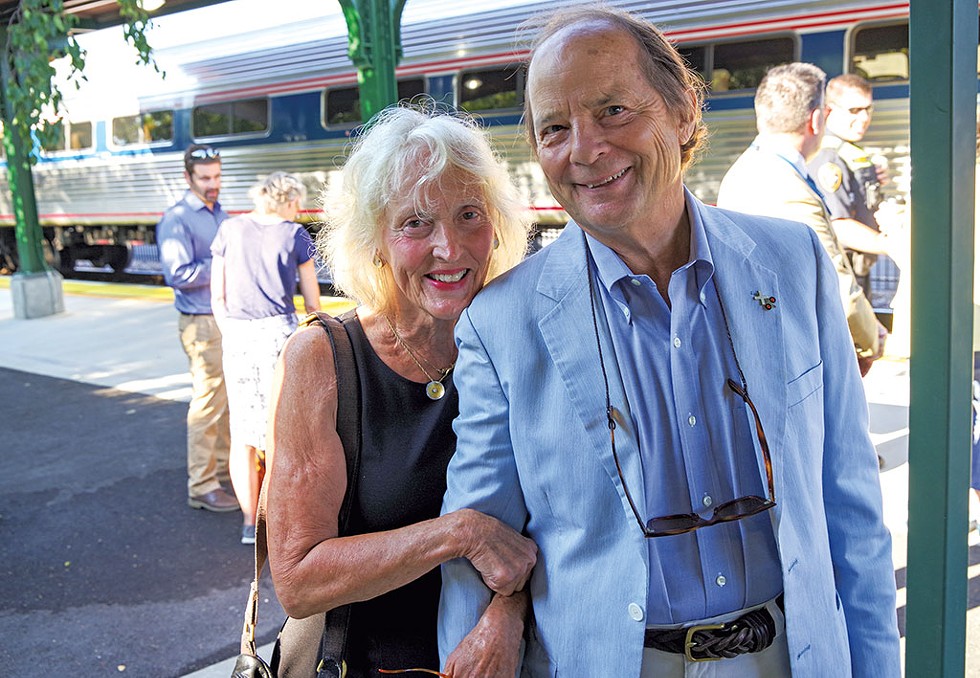

- Stephen Mease
- Melinda and Rick Moulton at the opening of the Burlington Amtrak station
Moulton and Steele got some help paying for the renovations to Union Station, which included the rear addition that now houses Burlington's Amtrak depot. The project benefited from a $1.5 million federal grant that then-governor Howard Dean secured in an effort to bring commuter rail to Burlington.
In 2000, the state launched the Champlain Flyer, a twice-daily commuter line that ran between Burlington and Charlotte, with stops in South Burlington and Shelburne. It was intended to get drivers off Route 7 during a major highway overhaul. However, because the road construction was delayed, commuters never rode the train in significant enough numbers to make it financially viable. In 2003, Dean's successor, governor Jim Douglas, pulled the plug.
One day, Moulton got a call from Dean, whom she'd known for years.
"Howard says, 'You've got to prepare yourself. NBC News is up here doing a story for 'The Fleecing of America.' And guess who's the main fleecer?'" Moulton recalled with a laugh.
Evidently, someone had heard that Vermont had spent $1.5 million in taxpayer money on a train station with no trains.
When the news crew arrived, Moulton recalled, "You could have cut the energy with a knife. I was sitting there thinking, Oh, my God! What's my Aunt Isy gonna think?"
Moulton handled the situation with her usual flair. When a sound engineer tried to attach a microphone to her blouse, she called him out. "I said, 'Excuse me! Excuse me!' And everyone looked at me and said, 'What?'" Moulton recalled. "I said, 'You need to get your hand off my ass!' And everybody cracked up."
Moulton's joke diffused the tension. NBC News still ran the story on "NBC Nightly News With Tom Brokaw," but it wasn't as negative as she'd expected. Moulton's Aunt Isy liked it when Moulton looked straight into the camera and said, "People love trains, and they'll ride them." Railroads were omnipresent in industrial Allentown, where Moulton grew up. Living for years in New York City and Boston, Moulton saw that trains were an essential form of public transportation.
The failure of the Champlain Flyer was a major setback for passenger rail in Vermont. It wasn't until 2017, when the Vermont Agency of Transportation began replacing the tracks and railroad bridge in Middlebury — part of $115 million in state and federal capital improvements — that it became a realistic possibility again.
Charlie Moore, a 40-year veteran of the railroad industry and a 15-year member of the Vermont Rail Advisory Council, called Moulton "the driving force behind getting the Ethan Allen passenger service to the Burlington station."
He added, "She is, by far, the biggest rail advocate that I know."
From 1999 until 2005, the Moultons organized what they called Rail Day, an annual celebration in Vermont towns, including St. Albans, Rutland and Bennington, that were heavily influenced by the railroads. Those events drew hundreds of people in an effort to drum up support for passenger rail.
Moulton was also instrumental in overcoming the final stumbling block for the Express in Burlington with what Moore called "the great compromise." In 2019, the Vermont Agency of Transportation and Vermont Rail System, the private company that owns the railroad and Burlington's rail yard, proposed installing a second track between King and College streets, a place to service and overnight the Amtrak trains. Had it been built, the second track would have displaced the bike path and contributed to air and noise pollution on the waterfront.
Neighbors howled their objections at the city council. Among the most vocal opponents was Moulton. To have a diesel engine idling at Union Station, while train workers serviced the onboard toilets, threatened her decades of work to improve and beautify the waterfront.
Eventually, a deal was struck by Vermont Rail System, the Agency of Transportation and the city. No second rail was built, and the Amtrak trains are now being serviced in the rail yard.
Asked whether Moulton had a hand in torpedoing the plan for the second rail, Moore was unequivocal. "Lemme tell you, Melinda had a hand in everything. And that's a good thing," he said with a laugh.
"Melinda is so passionate," he added. "Once she makes her mind up, that's the way it's gonna be, and she's going to convince everybody else that this is the best route to take for rail in Vermont."
Dean concurred with Moore's assessment.
"I think there would have been a double track if she hadn't laid down the law to the mayor," he said, referring to Miro Weinberger. Dean wouldn't say — on the record or off — what Moulton told him, "but apparently she blew the roof off, and that was the end of that."
Next Act
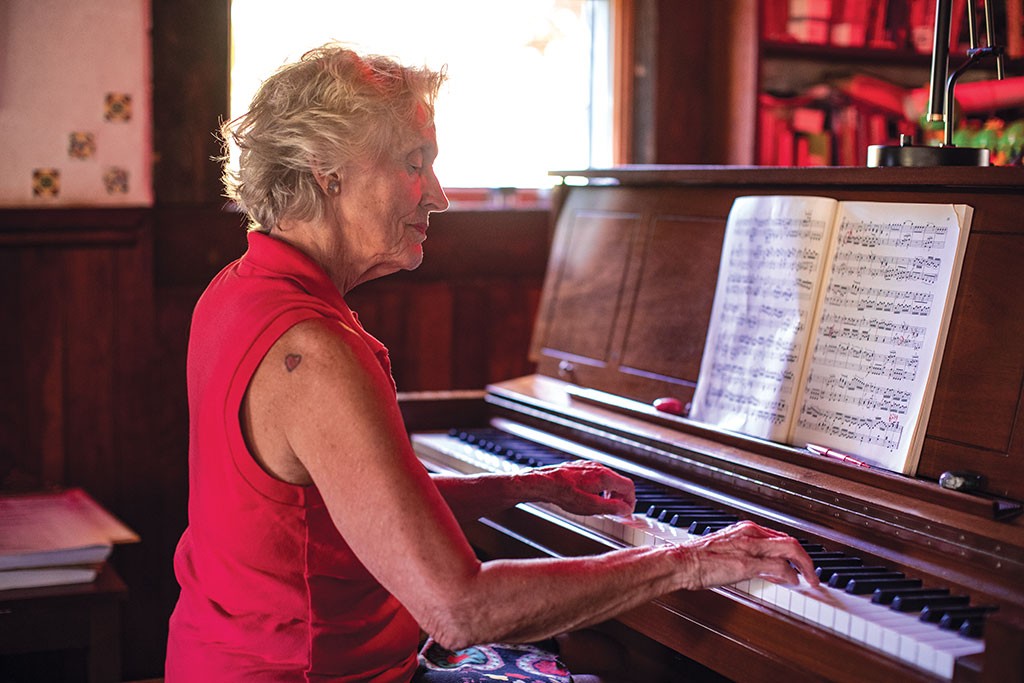
- Luke Awtry
- Playing the piano
It's not much of a stretch to imagine Moulton performing in the Spielpalast Cabaret as "a Gloria Swanson-like character in a garter and bustier." That's just one of her retirement plans. An avid fitness buff who practices Pilates, she promised, "If [Spielpalast] ever comes back, I'm going to try out."
Another interest: With cannabis now legal in Vermont, she said she'd like to help with the decriminalization of psilocybin, the psychoactive agent in "magic mushrooms," which research suggests has promising therapeutic benefits.
Moulton is already working on a book of short stories and a film about nonverbal autism with Rick. Their daughter, Mariah Riggs, director of the Main Street Landing Performing Arts Center, has a son who was diagnosed with autism at 18 months. He's now 18 years old. The couple has helped care for him and, a few years ago, took money out of their retirement savings to build him an in-ground pool, which he loves.
Moulton also plans to continue her volunteer work on restorative justice, civil liberties and, of course, women's reproductive rights.
"I'm more riled up than I've ever been," said the grandmother of three teenage girls. "I can't imagine leaving this planet not having secured reproductive freedom for women."
But Moulton is also looking forward to having some fun. More cliff diving, perhaps? It's been years since she's taken a big plunge.
In her fifties, Moulton went to Red Rocks Park in South Burlington to do some diving during a particularly dry summer. Watching her that day were some kids who were about 10 years old. They all began chanting "Dive! Dive! Dive!"
When Moulton peered over the edge, she could see boulders jutting from the water. She dove anyway, threading the needle between the rocks. When she surfaced, the kids all cheered.
Ten years later, Moulton was walking on Church Street when a group of teens and twentysomethings behind her yelled, "Hey! There's that lady, the one who dove off the cliff at Red Rocks!"
Whatever Moulton does next, rest assured that she'll throw herself into it headfirst and leave a lasting impression.
The original print version of this article was headlined "Flower Powerhouse"
Got something to say?
Send a letter to the editor
and we'll publish your feedback in print!
About The Author
Ken Picard
Bio:
Ken Picard has been a Seven Days staff writer since 2002. He has won numerous awards for his work, including the Vermont Press Association's 2005 Mavis Doyle award, a general excellence prize for reporters.
Ken Picard has been a Seven Days staff writer since 2002. He has won numerous awards for his work, including the Vermont Press Association's 2005 Mavis Doyle award, a general excellence prize for reporters.
More By This Author
Latest in Business
Speaking of...
-

Haymaker Bun’s New Burlington Café Packs a Punch
Jul 23, 2024 -

Q&A: As Emoji Nightmare, Cambridge Resident Justin Marsh Brings Drag to Rural Towns
Jul 17, 2024 -

Crumbs: Restaurant Transitions in Chittenden County and St. Johnsbury
Jul 16, 2024 -

Burlington Will Vote on Police Oversight Measure in November
Jul 16, 2024 -

Supreme Court Clears the Way for Higher Ground to Move to Burton Campus
Jul 15, 2024 - More »


























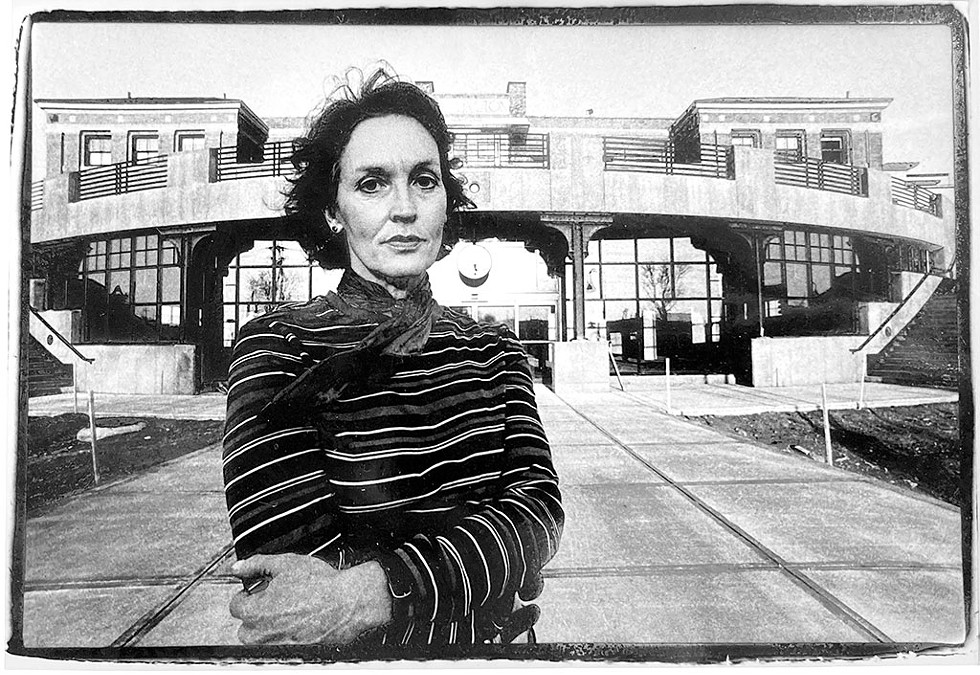
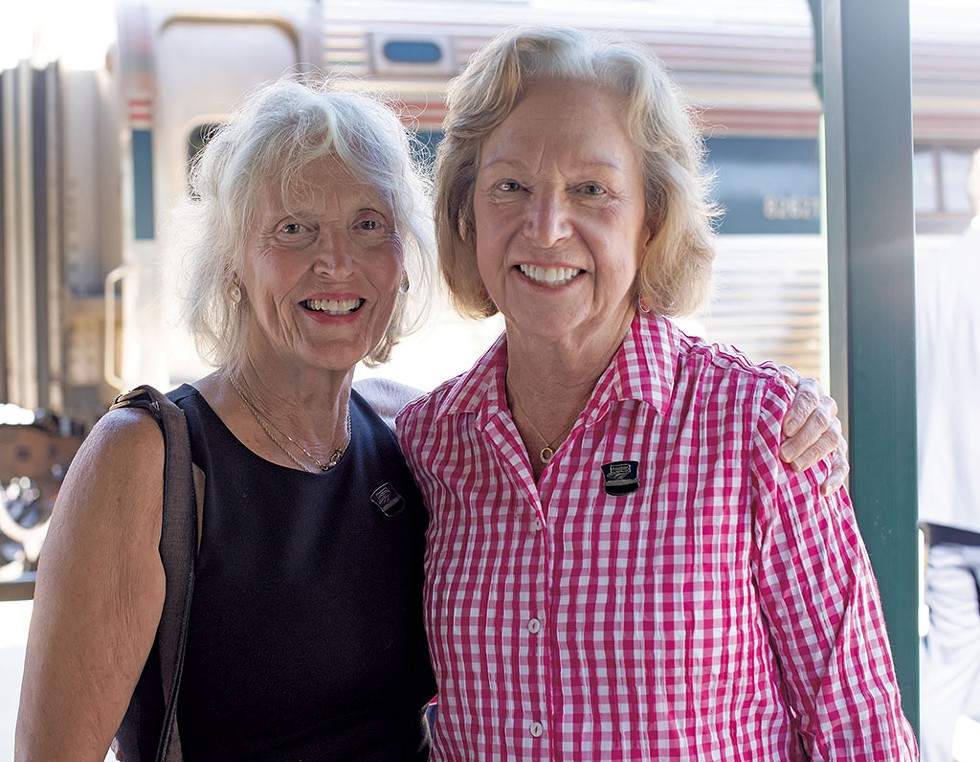
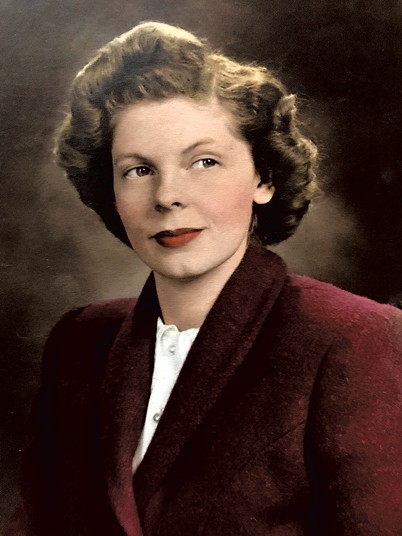

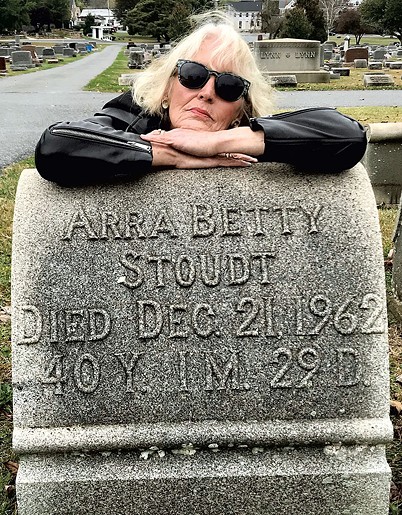
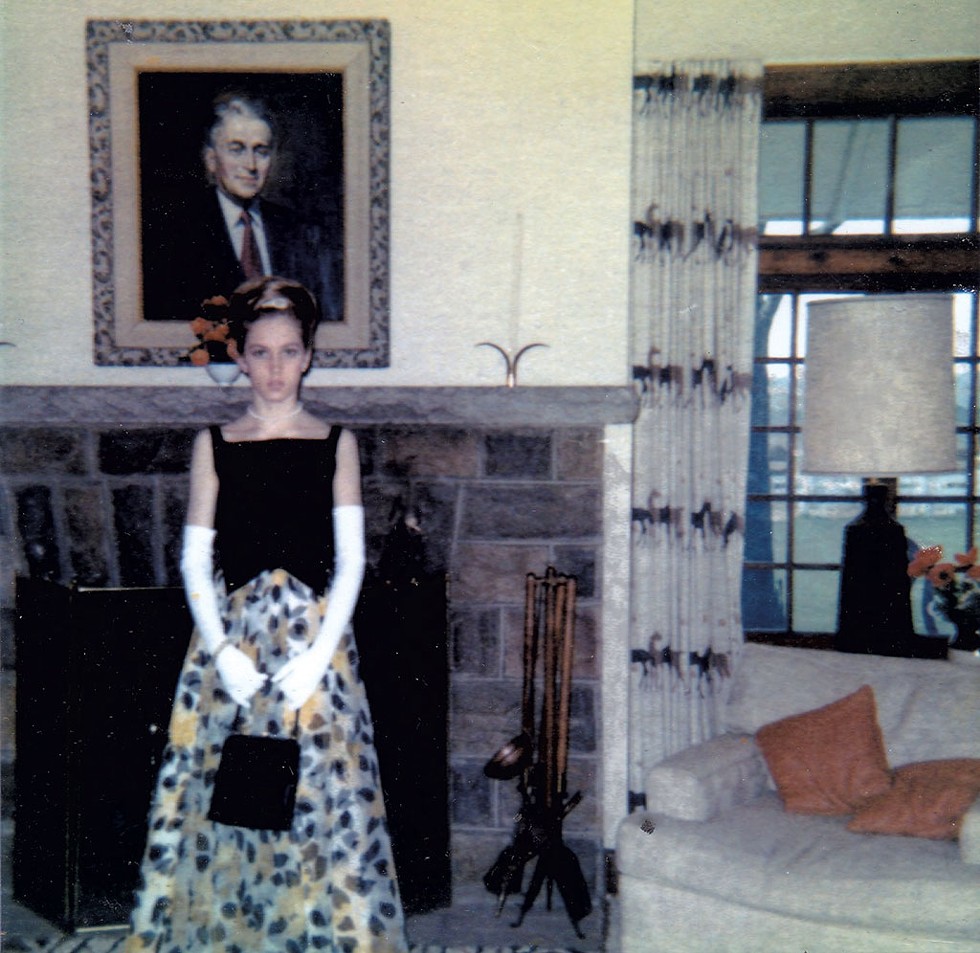


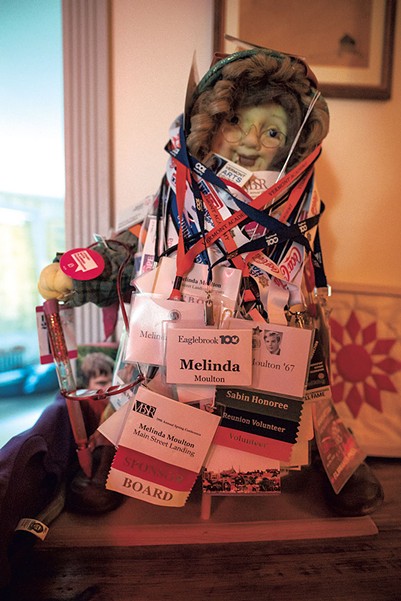













find, follow, fan us: